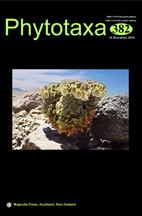Abstract
Ilex formosana and I. tetramera, both occurring in subtropical forests of China, are easily confused in morphology and distribution. To unravel their identities, phylogenetic analyses of multiple accessions of the two species and their possible relatives using two nuclear DNA loci (ITS and ETS) are conducted in present study. Our results show that I. formosana (sampled from type locality) is closest to I. matanoana and I. mertensii, and I. tetramera (sampled from type locality) is sister to I. nuculicava, while the remaining samples, which were originally identified as I. formosana or I. tetramera, form a strongly supported clade sister to I. cinerea, representing a cryptic new species, which is named here as I. shukunii. Despite the homogeneity in morphology, the divergence in the distribution of I. formosana, I. shukunii, and I. tetramera also supports our phylogenetic results. Insulated by the Taiwan Strait, the re-defined I. formosana is restricted to Taiwan Island. Separated by the Tanaka-Kaiyong Line, a major phytogeographic boundary of Sino-Himalayan and Sino-Japanese Floras, I. shukunii occurs from southeast Yunnan to southeast mainland of China, whereas the re-defined I. tetramera is endemic to southwest Yunnan.

